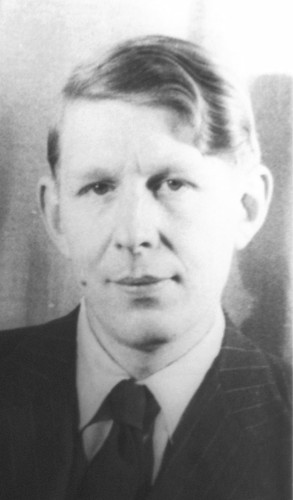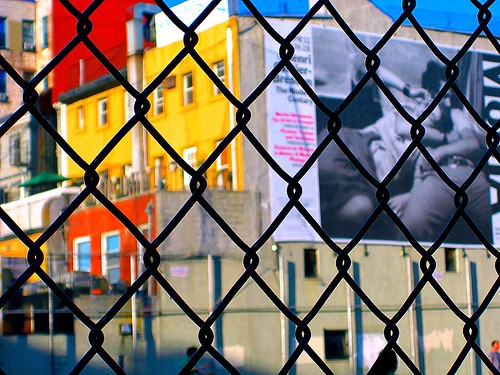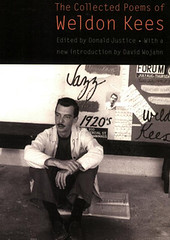A cultural oddity of the East Village is that it has more often been a home to poets than novelists. Some of the poets (Allen Ginsberg, W.H. Auden) are about as famous as poets get. Others (Edwin Denby, Bernadette Mayer) are known to only a few. The vast majority, as you would expect, are almost completely unknown.
Weldon Kees, who lived at 129 E. 10th Street (the apartment building directly next to St. Mark’s Church) from October 1943 until November 1945, and later rented a loft at 179 Stanton Street in the Lower East Side, is an exception. As a cult figure with an ardent following, he’s certainly known to some people – but his connection to the East Village has been all but forgotten. Perhaps that’s appropriate: An absence as much as a presence, a shadow where a human should be, Kees is the Harry Lime of modern American poetry, as in the character played by Orson Welles in “The Third Man”: Now you see him, now you don’t. Read more…
 WikiCommons The poet in 1939.
WikiCommons The poet in 1939.So let’s hear it for the greatest writer ever to live in the East Village. What’s that, you say? James Fenimore Cooper? Leon Trotsky? William S. Burroughs? Allen Ginsberg?
Hmm. No offense to the above authors, but surely you jest. The greatest writer ever to settle in the East Village, a transatlantic literary god whose appearance was as unexpected as that hawk showing up in Tompkins Square Park, was the English-born poet, W.H. Auden, who lived at 77 St. Marks Place from 1953 to 1972. In 1917, Trotsky had edited a dissident newspaper in the same building. The painter Larry Rivers was already living there when Auden and his lover, Chester Kallman, moved in. And the man who had previously occupied their railroad apartment was an abortionist. For neighborhood “color,” you can’t top that.
The coming month is a big one in Auden’s posthumous career. (He died in Vienna on September 29, 1973.) And this fortnight, in which we will mark the 10th anniversary of 9/11, will also be a 10th anniversary of sorts for him. Seventy-two years ago today, he began writing his aphoristic, agonized, and intensely lyrical meditation on the outbreak of World War II, “September 1, 1939.” It was composed shortly after he moved to New York with his pal Christopher Isherwood (“Berlin Stories,” “A Single Man”), and 62 years later, a few days after Mohammed Atta & co. brought down the Twin Towers, the poem took on a second life among the smart set on both sides of the Atlantic. Read more…
 Michelle Rick
Michelle RickCities are unforgiving places, and New York perhaps the least forgiving of all.
One of its less attractive traits has always been its self-mythologizing triumphalism and I ♥ NY campaigns, a localized form of the nationalism it derides in the rest of the country. “If I can make it there, I’ll make it anywhere,” Frank Sinatra sang in what has become Manhattan’s unofficial national anthem and New Year’s rallying cry. It’s a sentiment to which countless scrambling citizens still subscribe. If they can just work hard enough, be ingenious and ruthless enough, they too will be “king of the hill / Top of the heap,” because this is the place. Or so we like to think.
Is it, though? Just over a century ago, C.P. Cavafy (1863-1933), an enduringly popular Greek poet who lived in Alexandria, Egypt, wrote a 16-line poem called “The City” which immortalizes a peculiarly urban dilemma whose outlines disenchanted New Yorkers will readily recognize. Those who have just moved here should read the poem, memorize it, print it out, and stick it on the fridge door.
Read more…






